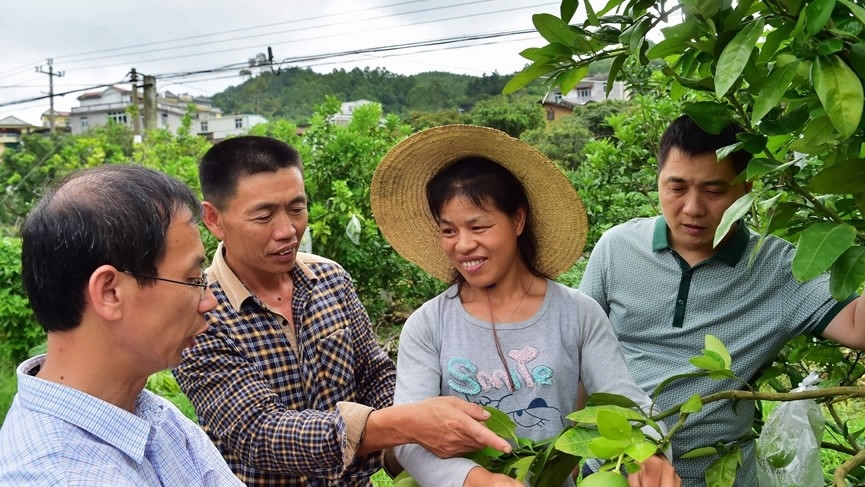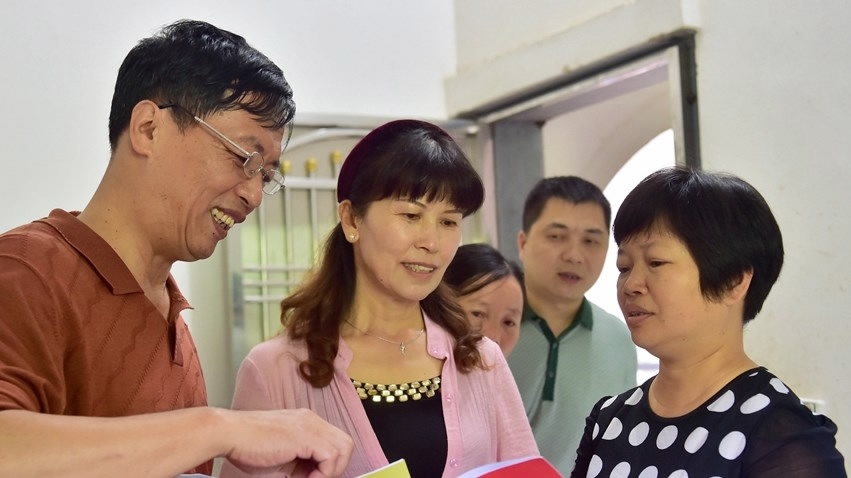
17:59, 28-Feb-2019
Highlight - How are the Six “Precisions” of Poverty Alleviation Applied?

It was in 2013 that General Secretary Xi Jinping proposed the concept of “targeted poverty alleviation”. During an inspection trip to Guizhou in 2015, he proposed six kinds of “precisions”: precision in identifying the real poor; precision in tailoring aid projects to help the poor according to their needs; precision in guaranteeing financial support for aid projects; precision in guaranteeing the implementation of aid projects for every impoverished household; precision in designating officials to help carry out poverty alleviation measures in every poor village; and precision in evaluating whether poverty alleviation goals are met within defined standards. The “six precisions” enable targeted poverty alleviation but how are they applied? Robert Lawrence Kuhn raised this question to Huang Chengwei, Director General of the National Poverty Alleviation Publicity and Education Center.

A supervisor of the CPC is conducting a survey on the poverty alleviation of the villagers in Nanxia Village, Putian City, Fujian Province on June 4, 2017.
A supervisor of the CPC is conducting a survey on the poverty alleviation of the villagers in Nanxia Village, Putian City, Fujian Province on June 4, 2017.
“The six kinds of precision poverty alleviation lay the groundwork for General Secretary Xi Jinping’s targeted poverty alleviation. The six precisions refer to the need to achieve precision in identifying the recipients, in making project arrangements, utilizing funds, implementing household-specific measures, official assignments and fulfilling the goals. I will use one village as an example of how we apply those six precisions. Say, if there are 100 households in the village, we will first identify the really poor among the 100. To achieve this goal, we will go through the procedures of democratic appraisal, and then get confirmation from township and county. Say we identify 50 of them as poor households.
After identification, we need to provide the 50 households with the precise support they need. In the past, we might have just simply offered all the 50 households with sheep for them to raise, but that support was not precise enough, because these 50 households may suffer poverty for various reasons. Some may lack funding, some may lack education, and some may lack the healthy necessary to do physical labor. Therefore, we cannot adopt a one-size-fits-all measure to the 50 households by providing them with sheep. So how can we to attain that precision in terms of support? First, we need to identify the specific reasons that cause the impoverishment of those 50 households, and then tailor aid projects accordingly. The village usually is not strong enough in self-development and self-organization, so we will assign cadres and a task group from outside the village to go there to assist the village development.
After precise support, we have a standard to evaluate whether we have achieved the goal of poverty alleviation. That is the precision being put into effect. To achieve that we need a whole set of integral systems that center on how to precisely utilize the resources, manage the programs, publicize the information and evaluate the results. The ultimate goal is to guarantee the most efficient support for the most impoverished people so that they can get rid of poverty, so that our goal of eradicating poverty can be attained.”
SITEMAP
Copyright © 2018 CGTN. Beijing ICP prepared NO.16065310-3
Copyright © 2018 CGTN. Beijing ICP prepared NO.16065310-3